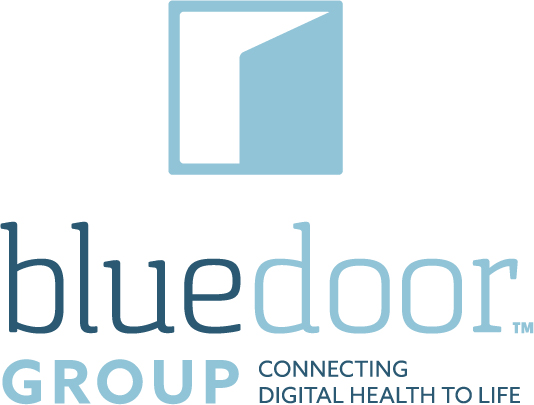Photo credit: jennifer maravillas for hbr
Finally, health care, which has been largely immune to the forces of disruptive innovation, is beginning to change. Seeing the potential to improve health with simple primary-care strategies, some of the biggest incumbent players are inviting new entrants focused on empowering consumers into their highly regulated ecosystems, bringing down costs.
This shift is long overdue. Whereas new technologies, competitors, and business models have made products and services more affordable and accessible in media, finance, retail, and other sectors, U.S. health care keeps getting costlier. It is now by far the world’s most expensive system per capita, about twice that of the UK, Canada, and Australia, with chronic conditions such as diabetes and heart disease now accounting for more than 80% of total spending.
These astronomical costs are largely due to the way competition works in American health care. Employers and insurance companies — not end consumers — call the shots on what kind of care they will pay for. Large hospitals and physician practices, in turn, compete as if they’re in an arms race to attract payers, adding advanced diagnostic gear or new surgical wings to differentiate, driving up costs.
In most industries, disruption comes from startups. Yet almost all health care innovation funded since 2000 has been for sustaining the industry’s business model rather than disrupting it. Our analysis of Pitchbook Datashows that more than $200 billion has been poured into health care venture capital, mostly in biotech, pharma, and devices where advances typically make health care more sophisticated — and expensive. Less than 1% of those investments have focused on helping consumers to play a more active role in managing their own health, an area ripe for disruptive approaches.
The Whole-Person Approach
One big incumbent that has become more receptive to disruptive innovation is the insurance giant Humana. It has partnered with Boston-based startup Iora Health. Created by physician-entrepreneur Rushika Fernandopulle, Iora has advanced a disruptive primary-care model that uses relatively inexpensive, nonphysician health coaches to identify patients’ unhealthy habits and life styles and guide them toward better choices, before health problems arise or become serious. Since its founding in 2010, Iora has attracted more than $123 million in funding and now operates 37 practices serving 40,000 patients in 11 states. Iora trains health coaches to become the consumer’s advocate, acting as the quarterback of an extended care team that includes a physician. When visiting an Iora clinic, the patient meets with the coach to establish a health agenda before seeing the doctor. After the patient sees the physician, the health coach and patient debrief to ensure the patient can confidently pursue the agreed-upon health goals — for example, by adopting new health habits. The coach then serves as the patient’s connection with the Iora team, and creates accountability.
Another feature of the Iora model is the morning huddle, when the entire care team invests an hour discussing the health status of the clinic’s population. Because Iora assumes full financial risk for its patients — it is paid a set fee per patient for a given period — the huddle prioritizes those who require the most attention and directs care around their needs.
To that end, Iora has developed a “worry score” methodology, which rates each patient on a 1-to-4 scale according to their health status and needs. Patients scoring a 4 require a specific action, such as immediate outreach from a health coach. If the patient’s outlook turns for the better, their worry score is lowered, a development celebrated by the team.
The Iora model has produced dramatic results in the management of chronic conditions. For example, an unpublished Iora study found that inpatient hospital admissions among a cohort of 1,176 Iora Medicare enrollees over an 18-month period decreased by 50%, emergency department visits decreased by 20%, and the total medical spend declined by 12% — this despite the cohort being sicker than average Medicare patients.
Iora is not alone in this approach to focusing on health rather than health care: Oak Street, Omada, Docent, ChenMed, WellMed, Mosaic, Aledade and others have gained traction with disruptive care-team models. What makes the models disruptive — and able to get a foothold among mammoth incumbent provider organizations — is the combination of delivery and payment schemes (capitation is the predominant model); either alone would be unlikely to succeed.
Encouraging Disruption
Payers and other innovative delivery organizations have employed similar strategies for years. A range of programs — by Aetna, CareMore, Dignity Health, Humana, Kaiser Permanente, and the Medicare Advantage program — are using coaches and home visits to substantially improve health and lower costs. One study found that providers participating in Medicare’s Independence at Home Demonstration saved $1,010 per beneficiary on average in the second year of the program, primarily by reducing hospital use.
Another care-team-based pilot, the Diabetes Prevention Program, reduced patients’ risk of developing the disease and saved Medicare an estimated $2,650 per beneficiary over a 15-month period by helping patients lose an average 5% of their body weight through changes in diet and exercise. The program is delivered through primary care groups, hospitals, YMCAs, and telehealth networks, and patients are supported by weekly, hourlong “maintenance sessions” with coaches.
While this care model has proved powerful at a small scale, to have significant impact on costs and outcomes nationally it must serve millions more consumers. To achieve that scale, we recommend the following strategies:
For care providers: Embrace the business model of extended care teams that include health coaches. We recommend starting with pilot programs under which hospitals and clinics take on financial risk for patients’ health. This way, care teams are incentivized to help patients stay healthy.
For payers and insurers: Private-public partnerships like Medicare Advantage (under which for-profit insurers administer plans paid for by the government) have become successful marketplaces that allow disruptive models. We recommend extending programs modeled on pilots like Independence at Home and the Diabetes Prevention Program across privately-funded insurance markets.
For legislators: Work to enable new models of care that lower costs by incenting individuals, payers, and providers to improve wellness, rather than treat disease after it manifests. This requires fostering a robust individual insurance market in which payers reward providers for helping patients stay healthy.

Clayton M. Christensen is the Kim B. Clark Professor of Business Administration at Harvard Business School.

Andrew Waldeck is a senior partner at the growth strategy consulting firm Innosight, where he leads the firm’s healthcare practice.

Rebecca Fogg is the senior research fellow in healthcare at the Clayton Christensen Institute, a nonprofit, nonpartisan think tank dedicated to improving the world through disruptive innovation.










